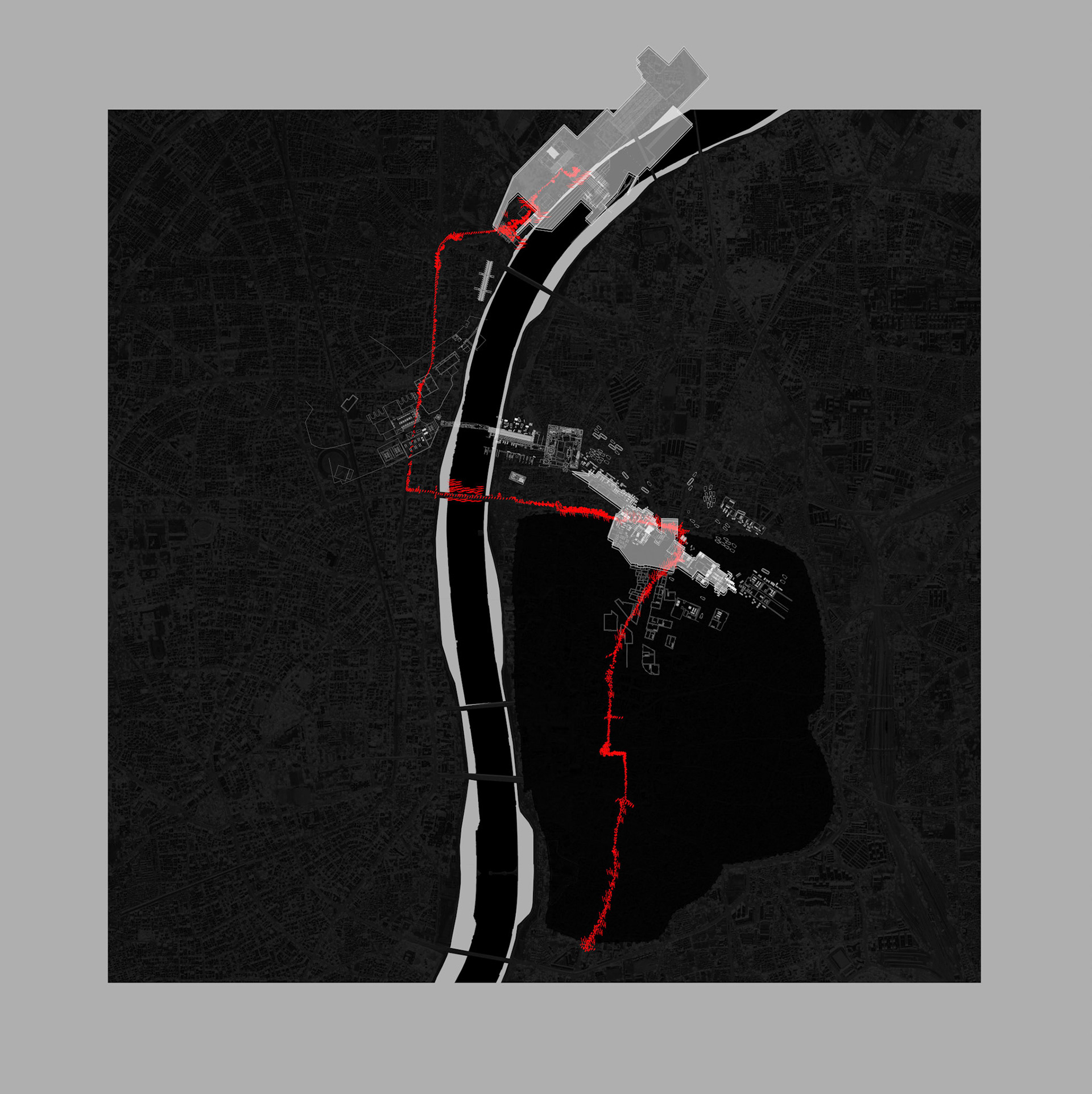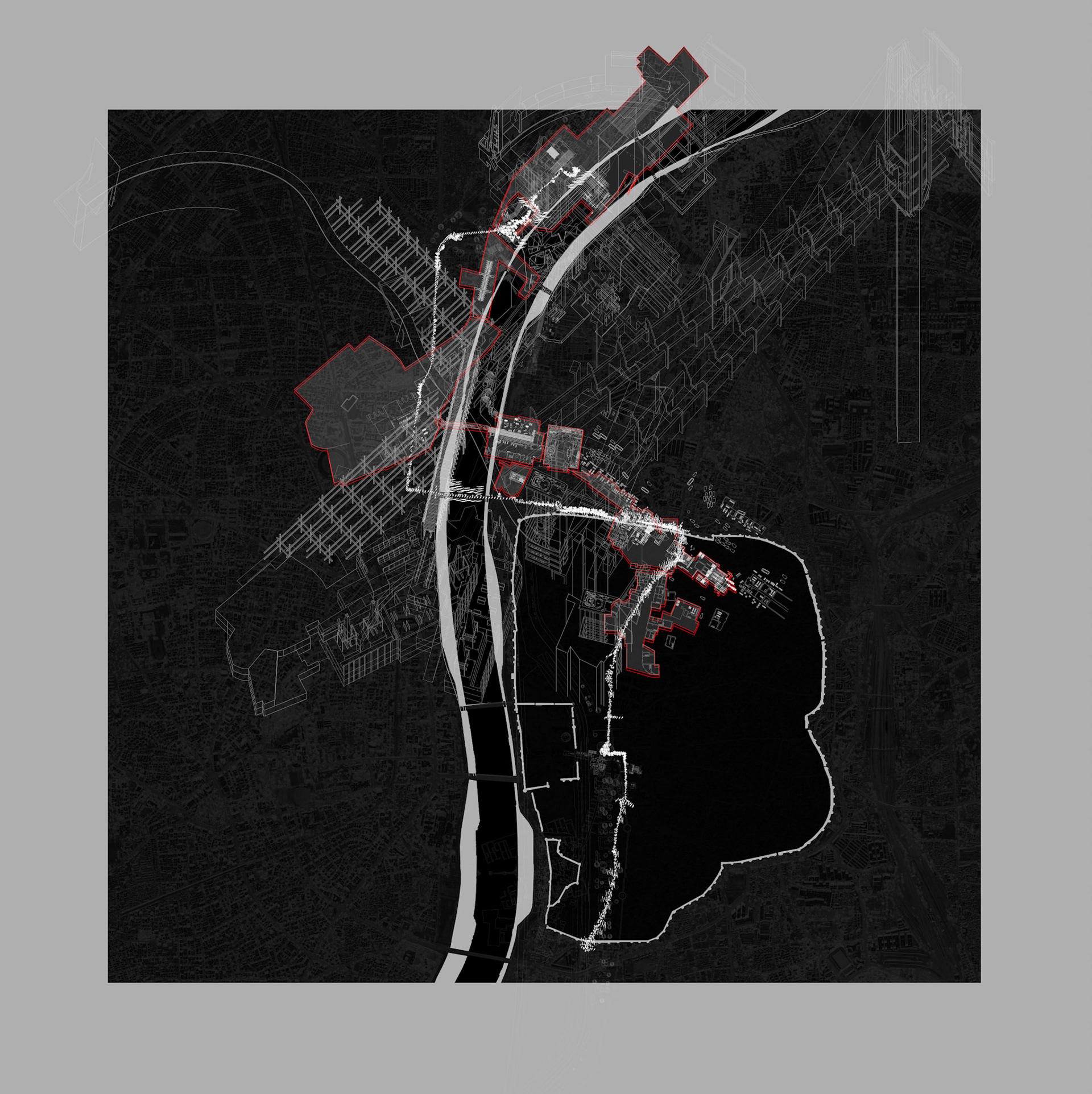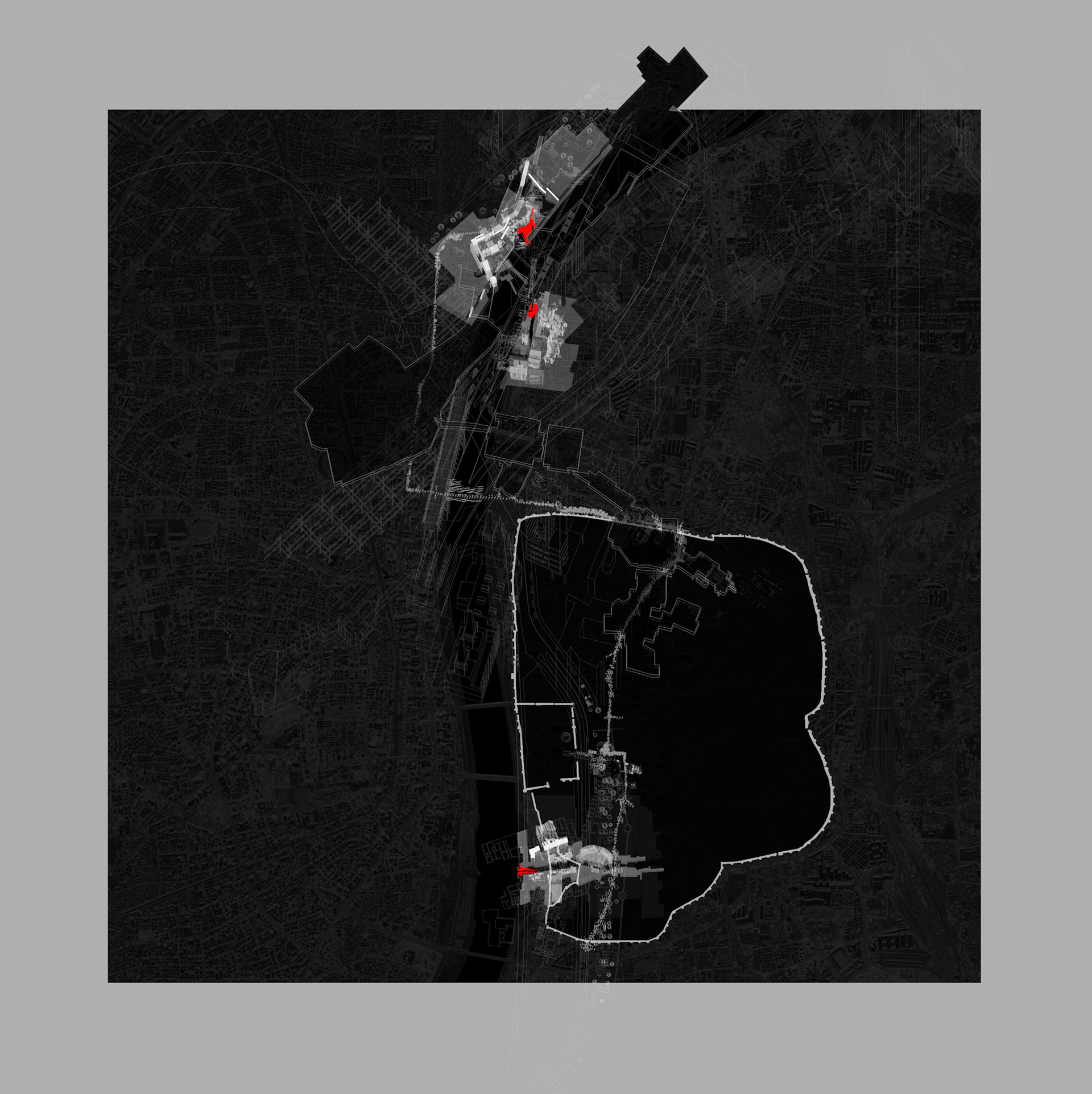Each place has its own territories boundaries. The territories are in relation to each other through the narrative of the salt march. The narrative gives them orientation and angle. And the exit from one territory is narratively connected to the entrance of the consecutive territories. That puts the places in series. There are two ways to represent the seriality of how one site progresses to the next one.
1. Through fragmentation, which is the inevitable fate of places in a narrative. Similarly, with our posture explorations, as something is revealed, the rest falls out of our perception. Therefore, by modelling the fragmentated elements that spoke to us in each consecutive territory, it provides a way of exploring the seriality of the places.
2. To look at the gaps – the way one place extends into another. While there are gaps in between fragments, between exits and consecutive entrances of places, there might be joining pieces of the transition such as the ones hinted on the strategy drawing at the end of semester one (refer to Archive 1). But just like chapters in a book sometimes are separated in time and space between each other, our sites show at least a spatial separation. But the chapters can be bound together by narrative, which in relation to our architectural gaps, they can be bounded together by the physical connections derived from our haunted architectural
language.
The territories are moved towards the riverfront to combine the old city of Ahmedabad to the riverfront city, as agencies in Ahmedabad. Territories are dragged to the Sabarmati River from The Salt March path by a transmission system. As they are dragged through the direction of the slide projections, the question is what is the material system that enables this movement, and that would take the function of bringing the territories forward. As such, the materiality is grounded by the scale and the material into the transmission model. Yet, as they go through the riverfront city, what is it that is left behind, and what is it that gets taken?
Metropolitan Transmission Model
The model at the current state aims to form materiality around slides and territories. It starts to articulate the model through different scales. Third scale is 1:500, which presents the territories’ urbanscape; fourth scale is 1:200, presenting fragmental relations between the objects within the territories. The second scale is 1:10,000, the metropolitan 12km riverfront, which runs across the model and holds the territories off the ground. As such, they inform the intensified riverfront city with the materiality and function from the old city. Further to the metropolitan scale, there is the first scale, 1:10,000,000, the global scale, which curated by the seriality of slides.
Projections and Transmissions
The process of movement of the territories brings the old city and the tectonics of ghost toward the riverfront. A drawing of the model illustrates the movements, projection and transmission systems on the canvas. The slides as optical devices formed projections onto the territories. And it is the vector of the projections that transmits territories into the riverfront.
Projection systems are deisgned with our understanding and investigation of the slides. For instant, Ashram is allocated with Jaipur’s astrological device slide (Archive 2, page 77). The territory’s projection system introduces the time measure from the slide. In which, it measures the calender time of The Salt March. By dragging the optical device of the slide onto the axis of the Ashram, it appears that the Ashram crosses the condition of the wall, towards the river. The change of territories’ boundaries are the consequence of the seriality of home-coming. The projections intruded the transmitions by creating seriality of architecutre and the memories of different location’s home-coming.
Tracking the Metropolitan
These series of drawings are explored in the format of a triptych to see the process of territorial development in transition and to track the ways of thinking. From the initial comprehension of The Salt March to understanding how hauntology could manifest itself on the riverfront.
There are different narratives explored in the drawing, which aim to arrive at the riverfront. It is through the transmission that it is uncovered what does and does not offer resistance on its path towards the Sabarmati River.

Territories, 1:5,000

Transmission, 1:5,000

